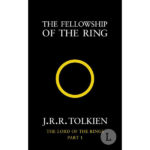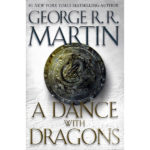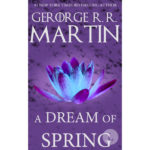Tender Is the Night, published in 1934, is F. Scott Fitzgerald’s fourth and penultimate novel, chronicling the decline of the American expatriate community on the French Riviera during the 1920s and 1930s. The novel explores themes of love, loss, disillusionment, and the search for identity in a world marked by wealth, materialism, and the fading glamour of the Jazz Age.
BOOK INFO
version: CLASSIC, EBOOK, AUDIOBOOK
number of pages: 300
literary movement: MODERNISM
literary genre: CLASSICS
1st edition: 1934
years of writing: late 1920s - 1933
SUMMARY
The story centers on the lives of Dick and Nicole Diver, a seemingly perfect and glamorous couple who become entangled in a complex web of relationships, infidelities, and personal crises. As the novel progresses, the veneer of their idealized existence begins to crack, revealing the hidden darkness and vulnerabilities that lie beneath the surface.
Dick Diver, a talented psychiatrist, struggles with his own demons and the burden of his wife’s fragile mental health, as well as his conflicting desires for professional success and personal happiness. His character serves as a poignant representation of the challenges faced by those who seek meaning and fulfillment in a world of shifting values and superficial pleasures.
Nicole Diver, a wealthy and beautiful woman, grapples with the trauma of her past and her struggle to find stability and independence within her marriage. Her character embodies the complexities and contradictions of the novel’s exploration of identity, love, and the search for self-worth.
The novel’s supporting characters, such as the young actress Rosemary Hoyt and the ambitious filmmaker Tommy Barban, provide additional perspectives on the themes of ambition, love, and the destructive power of wealth and privilege.
Tender Is the Night offers a vivid portrayal of the expatriate community on the French Riviera and the broader cultural context of the interwar period. Through its examination of the moral decay and disillusionment that characterized the era, the novel provides a critical reflection on the decline of the American Dream and the ultimate emptiness of material success.
Fitzgerald’s signature poetic prose and masterful use of symbolism imbue the novel with a sense of beauty and tragedy, as the characters’ dreams and aspirations collide with the harsh realities of their circumstances. The novel’s exploration of the human psyche and the complexities of relationships adds depth and nuance to its portrayal of the characters’ inner struggles and the impact of their choices on their lives.
MAIN CHARACTERS
Dick Diver
The novel’s protagonist, Dick is a talented psychiatrist who struggles with his own desires, ambitions, and personal limitations. He becomes entangled in complex relationships and personal crises while trying to balance his professional aspirations and his wife’s mental health. Dick represents the challenges faced by those seeking meaning and fulfillment in a world of shifting values and superficial pleasures.
Nicole Diver
Dick’s wife, Nicole is a wealthy and beautiful woman who grapples with the trauma of her past and her struggle to find stability and independence within her marriage. Her character embodies the complexities and contradictions of the novel’s exploration of identity, love, and the search for self-worth.
Rosemary Hoyt
A young and aspiring actress who becomes infatuated with Dick Diver, Rosemary represents innocence and youth. Her character offers an additional perspective on the themes of ambition, love, and the destructive power of wealth and privilege.
Tommy Barban
An ambitious filmmaker and friend of the Divers, Tommy becomes involved in a love triangle with Dick and Nicole. His character serves to highlight the consequences of ambition, desire, and personal choice.
Abe North
A close friend of the Divers, Abe is a talented composer whose life and career have been marred by alcoholism and personal failures. His character offers insight into the disillusionment and self-destructive tendencies of some members of the expatriate community.
Mary North
Abe’s wife, Mary, is a devoted and supportive spouse who struggles with the impact of her husband’s personal failures on their marriage and family life.
McKisco
A writer and member of the expatriate community, McKisco is involved in various conflicts and tensions among the characters. His character serves as a representation of the pettiness and rivalry that can exist within social circles.
Violet McKisco
McKisco’s wife, Violet, is a gossipy and often critical presence in the novel, reflecting the superficiality and judgmental attitudes that can pervade social environments.
Collis Clay
A young man who becomes friends with Rosemary, Collis is a minor character in the novel, but his experiences offer additional perspectives on the lives of the expatriate community and the challenges faced by its members.
Earl Brady
A wealthy businessman who becomes involved with Rosemary, Earl serves as a foil to Dick Diver, highlighting the contrasting values and priorities of the characters in the novel.
People living alone get used to loneliness.
F. SCOTT FITZGERALD
TOP 10 POINTS
- Decline of the American Dream: Tender Is the Night explores the decline of the American Dream, as it showcases the disillusionment and moral decay that accompanied the pursuit of wealth and superficial pleasures during the Jazz Age.
- Complex Relationships: The novel delves into the complexities of love, marriage, and infidelity, as the characters navigate a tangled web of relationships and personal crises.
- Search for Identity: The characters in Tender Is the Night struggle to find their own identities amidst the shifting values and expectations of their time, as they grapple with their desires, ambitions, and personal limitations.
- Mental Health and Trauma: The novel sheds light on issues related to mental health and trauma, particularly through the character of Nicole Diver, who suffers from mental instability as a result of her past experiences.
- The Burden of Responsibility: Dick Diver’s struggle to balance his professional ambitions, his wife’s mental health, and his own happiness highlights the theme of personal responsibility and the challenges associated with maintaining emotional and psychological well-being.
- Disillusionment and Loss: Tender Is the Night explores the themes of disillusionment and loss, as the characters come to terms with the harsh realities of their circumstances and the ultimate emptiness of their material success.
- Expatriate Community: The novel provides a vivid portrayal of the American expatriate community on the French Riviera, offering insight into the lives and experiences of those who sought refuge from the constraints of their home country.
- Interwar Period: Tender Is the Night is set during the interwar period, capturing the cultural, social, and political context of the time, as well as the broader changes and challenges that characterized the era.
- Poetic Prose and Symbolism: Fitzgerald’s signature poetic prose and masterful use of symbolism contribute to the novel’s evocative and poignant portrayal of its characters and themes.
- Enduring Significance: Tender Is the Night remains a significant and enduring work of American literature, as its exploration of the fall of idealism, the struggle for identity, and the search for meaning continues to resonate with readers nearly a century after its publication.
MOVIE ADAPTATION
Tender Is the Night has been adapted for the screen on two occasions: a 1962 film directed by Henry King, starring Jennifer Jones and Jason Robards, and a 1985 television miniseries directed by Robert Knights, featuring Mary Steenburgen and Peter Strauss.
The movie adaptation of F. Scott Fitzgerald’s Tender is the Night brings to life the glamour, romance, and tragedy of the novel, set against the picturesque backdrop of the French Riviera. Released in 1962, the film was directed by Henry King and featured a talented cast.
In 1985, F. Scott Fitzgerald’s Tender is the Night was once again brought to life, this time as a six-hour television miniseries. Produced by Showtime and the BBC, this adaptation took a deeper dive into the complexities of the novel, providing a more detailed exploration of the characters and themes. Directed by Robert Knights, the miniseries featured an impressive cast and gave audiences a fresh perspective on Fitzgerald’s classic story.
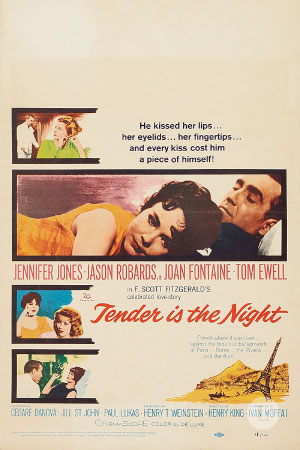
(1962)

(1985)
AT THE END
In conclusion, Tender Is the Night is a powerful and haunting exploration of the fall of idealism, the struggle for identity, and the search for meaning in a world marked by wealth, materialism, and the fading glamour of the Jazz Age. Through its vivid characters, evocative settings, and poignant examination of the human condition, the novel remains a significant and enduring work of American literature.
ABOUT WRITER
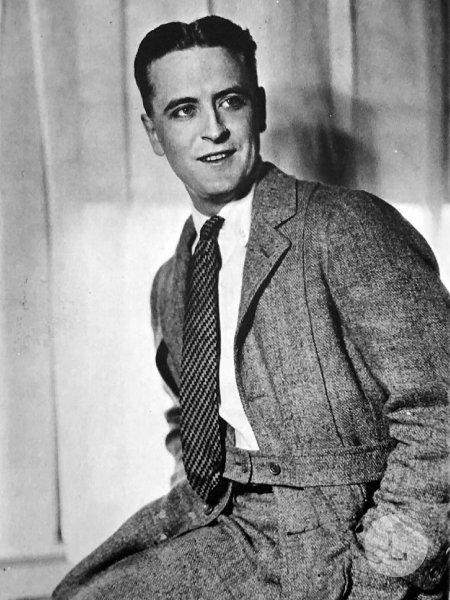
Francis Scott Key Fitzgerald was an American author celebrated for his novels and short stories that capture the spirit of the Jazz Age. His works, including The Great Gatsby and Tender Is the Night, are renowned for their lyrical prose, vivid characters, and exploration of themes such as wealth, love, and the American Dream. Through his writings, Fitzgerald left an indelible mark on 20th-century literature.

